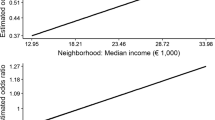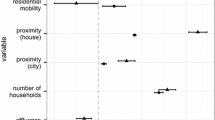Abstract.
This article investigates home attributes that attract residential burglars in choosing a target. These attributes are the location of the home, its physical appearance, demographic characteristics of the residents, and the security precautions present. The theoretical foundation of the empirical model is the criminal utility maximization behavior that considers costs and benefits as formulated by Becker. However, this article introduces to the model the spatial dimension of the burglar's search for a target. The incidence of burglary is the dependent variable and is measured in a dichotomy scale. The empirical analysis utilizes a survey database of burgled and non-burgled homes that was conducted by the researchers. A logit model is used for the investigation, and the effects of the explanatory variables are calculated as probabilities. The database is unique in the wealth of attributes of individual homes that are relevant to burglars' decision process.
Similar content being viewed by others
Author information
Authors and Affiliations
Additional information
Received: 18 June 1997 / Accepted: 25 January 2000
Rights and permissions
About this article
Cite this article
Hakim, S., Rengert, G. & Shachmurove, Y. Target search of burglars: A revised economic model . Papers Reg Sci 80, 121–137 (2001). https://doi.org/10.1007/PL00013617
Issue Date:
DOI: https://doi.org/10.1007/PL00013617




